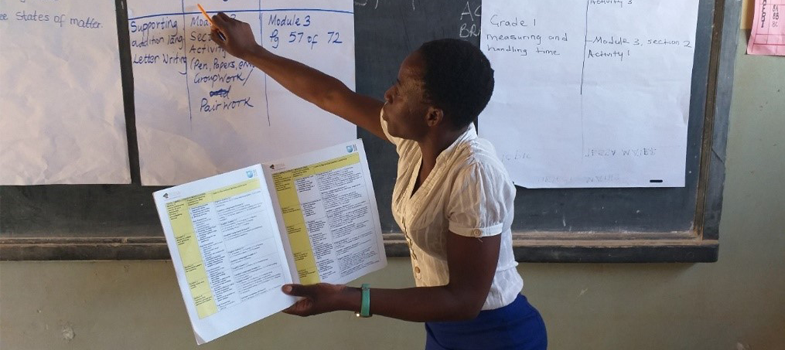Training guide
6. Peer observation
6.1. Organising peer observations
When you are organising a peer observation, take the following steps:
- Choose your partner
Wherever possible, choose your own partner. The outcome is likely to be more useful for both participants if you trust each other!
- Agree the format of the observations
Agree on a focus for the observation in advance. As was suggested above, you can focus on an approach which you are finding difficult and where input from a colleague will be helpful.
- Share some background
Tell your colleague in advance about the students in the class, the content of the lesson, and how it fits into the overall structure of the course. Perhaps suggest some specific students to observe
- The observation
Your colleague will keep notes on the observation to refer to during feedback.
- Follow-up
You should both meet soon after the observation. The focus should be on identifying the strengths of the teaching observed as well as the sharing of practical ideas as to how the teaching might be improved. Concentrate only on the areas agreed in advance and don’t get distracted by other things.
|
Example 4.8: Peer observation Remember Monica from example 4.7? Before Monica teaches her next social studies lesson with Grade 2, she asks her colleague, Thomas, if he will observe a pair-work activity she has set up. She shares her action plan with him. My action plan is as follows: My focus is on how I manage the pairs and my time management skills.
Before Thomas observes Monica’s activity, they agree that as he observes it, he will focus on how Monica organises a role-playing activity in pairs so that all the students are involved, and how she deals with her time management. She also asks him to comment on her questioning. |
|
Activity 4.13: Organising peer observation In pairs plan a peer observation based on the checklist above, where you both visit each other’s class.
Remember, the purpose for the observation is to analyse learning and what the learners are doing. Each decide on the focus of your observation and write down two or three objectives for your colleague to focus on when observing you. Then have a feedback session like in the next section and make notes in your Teachers' Notebook. |
